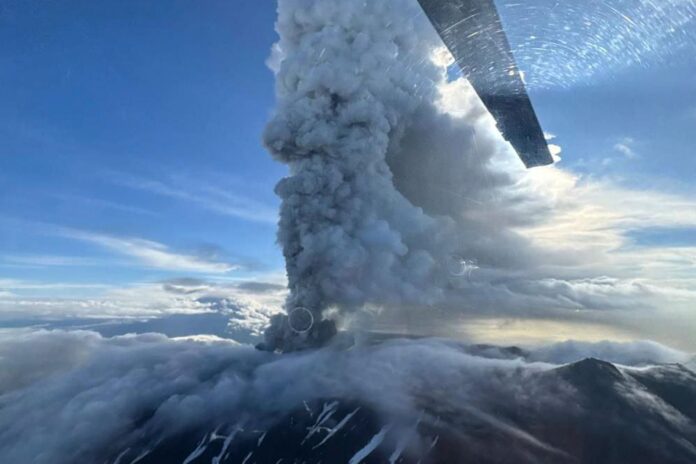The russian volcano eruption earthquake phenomenon has captivated scientists worldwide as the Krasheninnikov Volcano in Russia’s Kamchatka Peninsula erupted overnight on August 3, 2025, marking its first eruption in 600 years. This extraordinary geological event occurred just days after a massive 8.8 magnitude earthquake struck the region, raising questions about the connection between seismic activity and volcanic awakening.
Table of Contents
Historic Awakening After Six Centuries of Silence
Scientists confirmed that Krasheninnikov’s last lava effusion took place in 1463, plus or minus 40 years, with no eruption recorded since. The dramatic reawakening has sent a massive ash plume up to six kilometers into the sky, creating spectacular scenes across Russia’s far eastern peninsula.
Olga Girina, head of the Kamchatka Volcanic Eruption Response Team, stated: “This is the first historically confirmed eruption of Krasheninnikov volcano in 600 years.” The eruption represents a once-in-a-lifetime geological event that researchers are studying intensively.
Key Points Summary
🌋 Historic Event: First eruption in 600 years (since 1463)
🌍 Location: Kamchatka Peninsula, Russia’s Far East
📏 Ash Plume: Reached 5-6 kilometers high
⚡ Trigger: Massive 8.8 magnitude earthquake on July 30, 2025
🔬 Scientific Interest: Potential earthquake-volcano connection under study
The Earthquake Connection: Seismic Trigger Theory
The timing between the devastating earthquake and volcanic eruption has sparked intense scientific debate. Experts believe the volcano may have been primed to erupt before the magnitude 8.8 quake pushed it over the edge. This russian volcano eruption earthquake sequence demonstrates the complex relationships within Earth’s geological systems.
The Kamchatka branch of Russia’s ministry for emergency services reported that the ash plume drifted 75 kilometers eastward, affecting air quality and visibility across the sparsely populated region. Emergency services have been monitoring the situation closely since the eruption began.
Multiple Volcanoes Responding to Seismic Activity
The Krasheninnikov eruption wasn’t an isolated event. The Klyuchevskoy volcano, standing at 4,750 meters and located 280 miles north of the regional capital Petropavlovsk-Kamchatsky, also began erupting with hot lava descending its western slope. This dual volcanic response to the earthquake underscores the interconnected nature of the region’s geological systems.
Scientists are now closely monitoring both volcanic sites for continued activity. The simultaneous eruptions provide researchers with unprecedented opportunities to study how major earthquakes can influence volcanic behavior across extended geographic areas.
Regional Impact and Safety Measures
The eruption has prompted authorities to implement comprehensive safety protocols across the Kamchatka region. A 7.0 magnitude earthquake hit the nearby Kuril Islands, causing tsunami warnings for three areas of Kamchatka, adding complexity to the ongoing geological crisis.
Despite the dramatic nature of these events, the remote location of both volcanoes has limited immediate human impact. The Kamchatka Peninsula’s sparse population and distance from major urban centers have helped minimize direct risks to communities.
Scientific Significance and Future Monitoring
This extraordinary sequence of geological events provides scientists with valuable data about earthquake-volcano interactions. The fact that a dormant volcano remained inactive for six centuries before responding to seismic activity offers new insights into volcanic sensitivity and geological trigger mechanisms.
Research teams are now establishing enhanced monitoring systems around both eruption sites. The data collected from this rare russian volcano eruption earthquake event will contribute significantly to global understanding of volcanic prediction and seismic relationships.
The ongoing eruption continues to evolve, with scientists maintaining 24-hour surveillance of volcanic activity. Ash distribution patterns and lava flow directions remain primary concerns for aviation and regional safety planning.
As this remarkable geological drama unfolds in Russia’s far east, the scientific community watches with fascination. Have you witnessed similar natural phenomena in your region? Share your thoughts and experiences as we track this historic volcanic awakening together.
